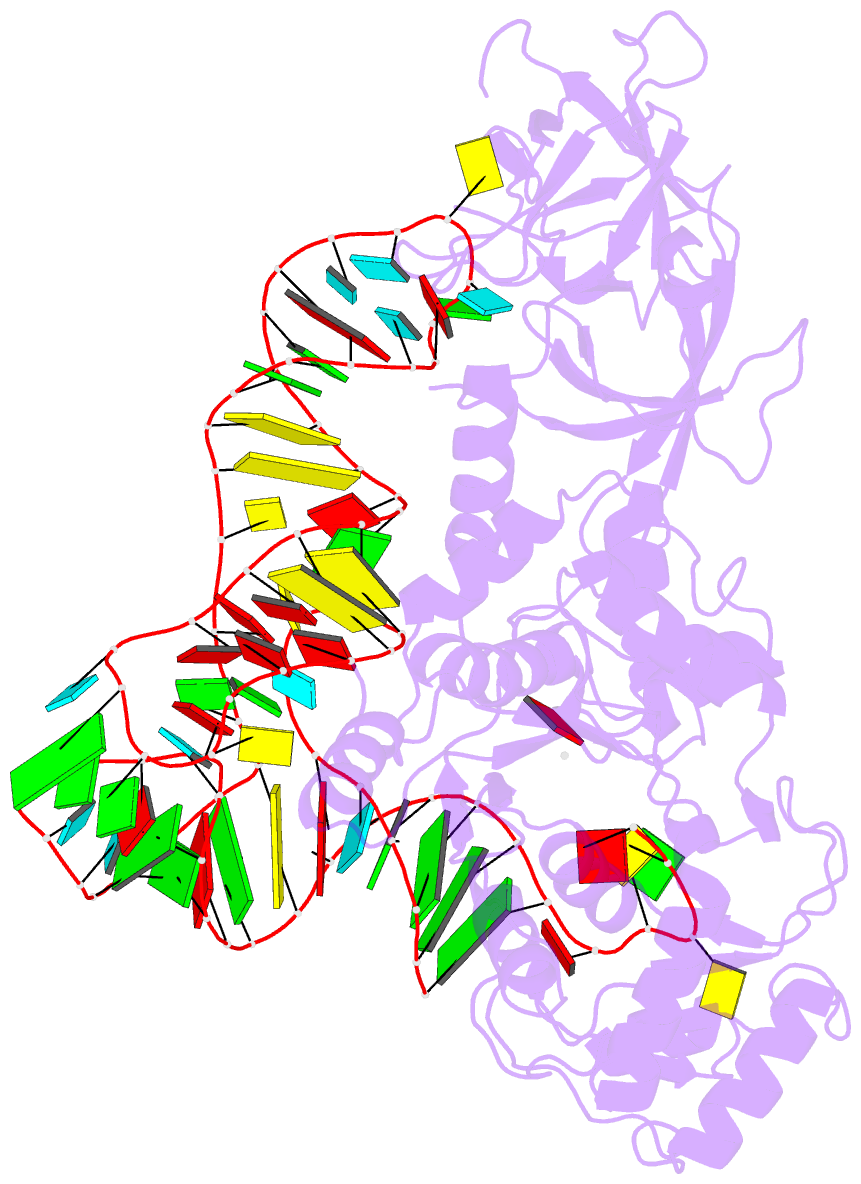Summary information and primary citation
- PDB-id
- 1euq; SNAP-derived features in text and JSON formats;
DNAproDB
- Class
- ligase-RNA
- Method
- X-ray (3.1 Å)
- Summary
- Crystal structure of glutaminyl-trna synthetase complexed with a trna-gln mutant and an active-site inhibitor
- Reference
- Sherlin LD, Bullock TL, Newberry KJ, Lipman RS, Hou YM, Beijer B, Sproat BS, Perona JJ (2000): "Influence of transfer RNA tertiary structure on aminoacylation efficiency by glutaminyl and cysteinyl-tRNA synthetases." J.Mol.Biol., 299, 431-446. doi: 10.1006/jmbi.2000.3749.
- Abstract
- The position of the tertiary Levitt pair between nucleotides 15 and 48 in the transfer RNA core region suggests a key role in stabilizing the joining of the two helical domains, and in maintaining the relative orientations of the D and variable loops. E. coli tRNA(Gln) possesses the canonical Pu15-Py48 trans pairing at this position (G15-C48), while the tRNA(Cys) species from this organism instead features an unusual G15-G48 pair. To explore the structural context dependence of a G15-G48 Levitt pair, a number of tRNA(Gln) species containing G15-G48 were constructed and evaluated as substrates for glutaminyl and cysteinyl-tRNA synthetases. The glutaminylation efficiencies of these mutant tRNAs are reduced by two to tenfold compared with native tRNA(Gln), consistent with previous findings that the tertiary core of this tRNA plays a role in GlnRS recognition. Introduction of tRNA(Cys) identity nucleotides at the acceptor and anticodon ends of tRNA(Gln) produced a tRNA substrate which was efficiently aminoacylated by CysRS, even though the tertiary core region of this species contains the tRNA(Gln) G15-C48 pair. Surprisingly, introduction of G15-G48 into the non-cognate tRNA(Gln) tertiary core then significantly impairs CysRS recognition. By contrast, previous work has shown that CysRS aminoacylates tRNA(Cys) core regions containing G15-G48 with much better efficiency than those with G15-C48. Therefore, tertiary nucleotides surrounding the Levitt pair must significantly modulate the efficiency of aminoacylation by CysRS. To explore the detailed nature of the structural interdependence, crystal structures of two tRNA(Gln) mutants containing G15-G48 were determined bound to GlnRS. These structures show that the larger purine ring of G48 is accommodated by rotation into the syn position, with the N7 nitrogen serving as hydrogen bond acceptor from several groups of G15. The G15-G48 conformations differ significantly compared to that observed in the native tRNA(Cys) structure bound to EF-Tu, further implicating an important role for surrounding nucleotides in maintaining the integrity of the tertiary core and its consequent ability to present crucial recognition determinants to aminoacyl-tRNA synthetases.





